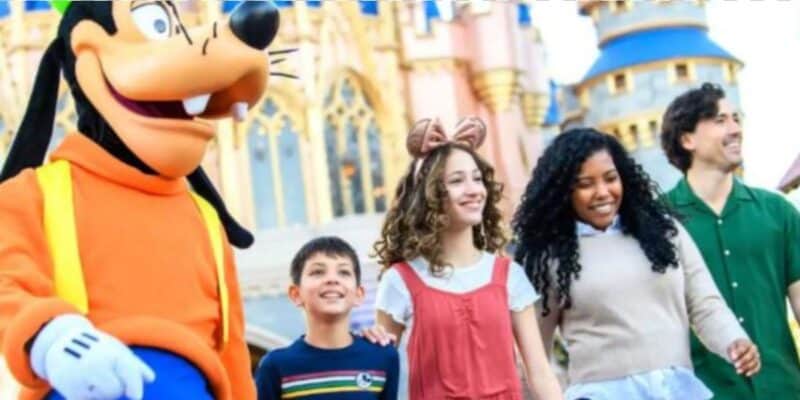There’s a reason Disney feels unlike anywhere else in the world. Sure, the fireworks are dazzling, the food is iconic, and the rides are unforgettable—but Disney has a lot more tricks up its sleeve than meets the eye. What most guests don’t realize is that the company uses clever design techniques to make its parks feel bigger, more magical, and endlessly explorable.
Even if you’ve been dozens of times, the moment you step through those gates, it feels like you’re entering an entirely new world. And that’s not an accident. It’s part of a carefully crafted illusion designed to make every inch of Disney’s four theme parks feel larger than life.
Here’s how they do it.
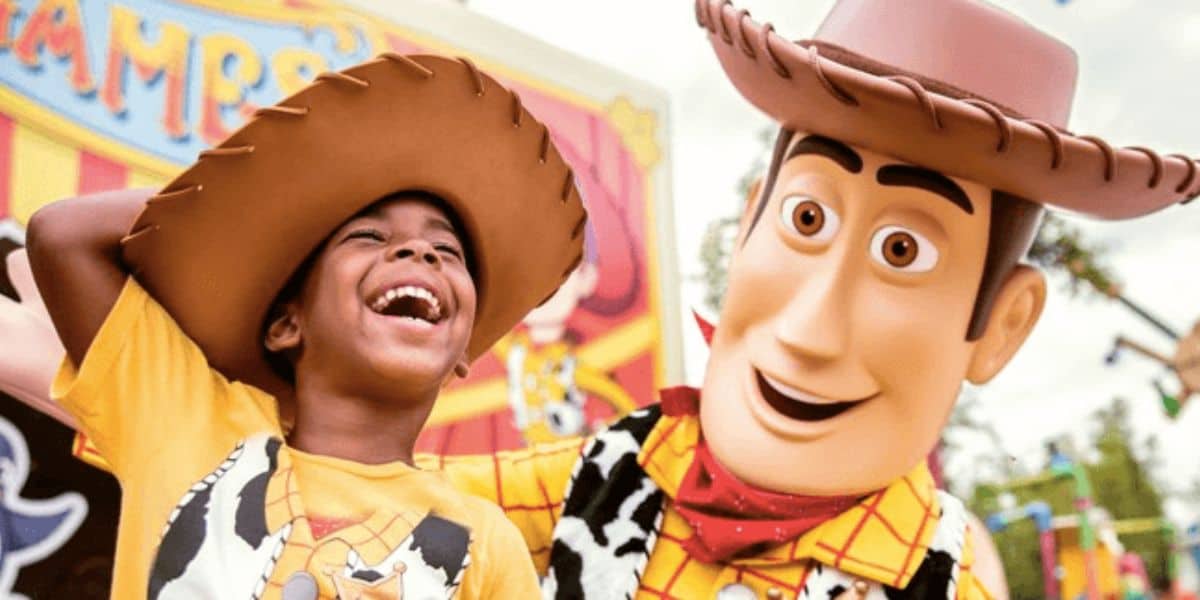
Four Parks, One Grand Illusion
When people think of Walt Disney World Resort, they often picture one single destination. But in reality, Disney has built four separate theme parks, each with its own personality and layout.
Magic Kingdom is the classic park—home to Cinderella Castle, Main Street, U.S.A., and timeless attractions like Pirates of the Caribbean.
EPCOT blends technology and culture, with futuristic rides in World Celebration and authentic experiences in World Showcase.
Disney’s Hollywood Studios brings movies to life with lands themed to Star Wars, Toy Story, and more.
Disney’s Animal Kingdom mixes lush environments, wildlife, and some of Disney’s most immersive design.
Each park has a distinct “feel,” but they all share one clever aspect: design strategies that make their footprints appear far larger than they really are. Once you’re inside, Disney wants you to feel like the world stretches on forever.

The Magic of Forced Perspective
The first trick up Disney’s sleeve is something called forced perspective. You’ve experienced it every time you walk down Main Street toward Cinderella Castle—even if you didn’t realize it.
Here’s how it works: Disney designs buildings and icons so that their upper levels shrink in size as they go up. The ground level is full scale, the second floor is slightly smaller, and the top floors are scaled down even more. This makes the buildings—and especially the castle—look much taller than they actually are.
It’s a psychological illusion that tricks your brain into thinking you’re approaching something monumental. That’s why the castle feels towering and majestic, even though it’s much shorter than a skyscraper.
Forced perspective is everywhere—on Main Street, U.S.A., the American Adventure pavilion in EPCOT, and even the Hollywood Tower Hotel. It’s a subtle trick, but it’s one of Disney’s most effective ways to expand the illusion of space.
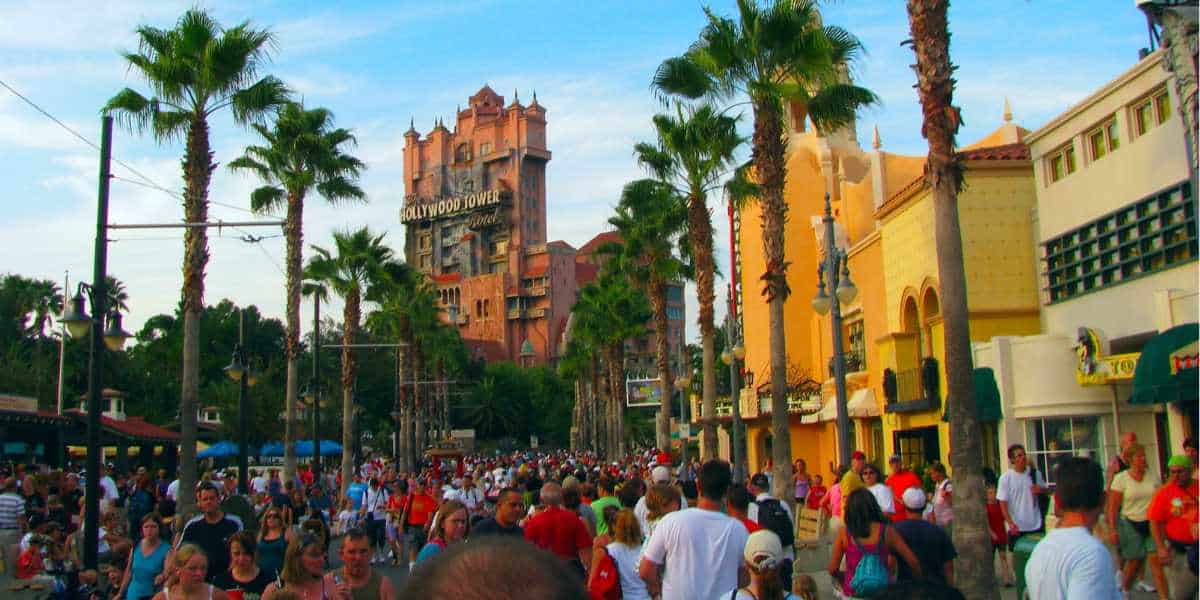
Layered Sightlines
If forced perspective makes the icons appear larger, layered sightlines make the parks themselves seem more substantial. Disney doesn’t just build things in straight, open lines. Instead, Imagineers carefully control what guests can see at any given moment.
Walk through any park, and you’ll notice that your view is never fully open. Buildings, trees, and winding paths guide your eyes, allowing you to see only what they want you to see. Lands rarely appear all at once—you’re always rounding a corner or walking toward a reveal.
That slow unveiling creates the sense that there’s always more to explore. Instead of feeling like a compact loop, the park suddenly feels like a sprawling, storybook world.
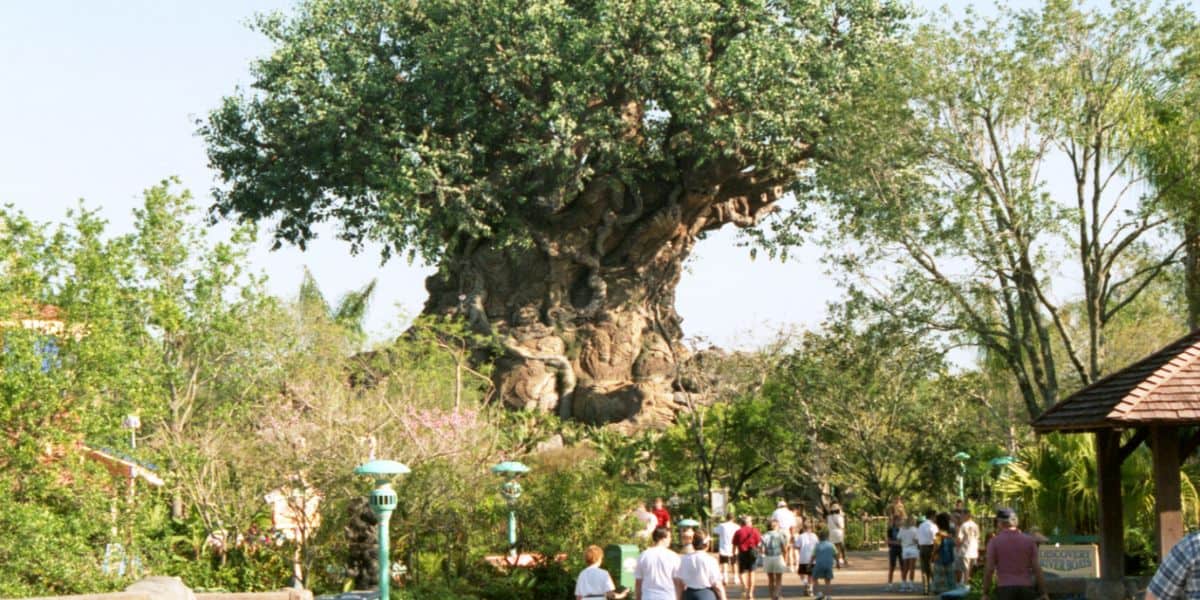
Curved Walkways and Indirect Routes
One of the most underrated design decisions in Disney parks is the method by which guests navigate from one place to another. Straight paths make spaces feel smaller. Disney knows that, which is why curved walkways and indirect routes are everywhere.
Think about walking through Adventureland or EPCOT’s World Showcase—you’re constantly turning corners, passing under archways, or crossing bridges. Each twist and turn makes the journey feel longer and more adventurous.
This isn’t just about crowd control (though it helps with that, too). It’s about storytelling. Winding pathways encourage guests to slow down, take in the surroundings, and feel as though they’re traveling farther than they actually are.

Strategic Landscaping and Hidden Transitions
Disney uses landscaping like an artist uses a paintbrush. Trees, plants, and terrain shifts play a massive role in how guests perceive distance and scale.
For example, Disney often places taller trees closer to walkways and smaller trees in the distance, creating the illusion of greater depth. Landscaping also hides the edges between lands. Instead of an abrupt border between, say, Liberty Square and Frontierland, guests experience a soft transition with carefully placed trees, planters, and lighting changes.
You might not even realize you’ve stepped into a new area until you’re surrounded by it. That seamless shift makes the park feel like one continuous world—vast and layered.

Visual Anchors That Pull You In
Walt Disney called them “weenies”—visual icons that draw people deeper into the park. Cinderella Castle, Spaceship Earth, Expedition Everest, and Tower of Terror all serve as magnetic visual anchors.
These landmarks create a sense of distance. You see the castle from the entrance of Magic Kingdom and instinctively feel like it’s a long journey ahead, even if it’s just a few minutes away.
They also make the parks feel structured and organized. Instead of wandering aimlessly, you’re subconsciously moving toward something grand.

Sound and Scent Layering
This is where Disney really leans into the magic. The company doesn’t just rely on what you see—they use sound and scent layering to shape how big the parks feel.
Each land has its own background music loop that subtly fades in and out as you move through it. That separation makes the parks feel divided into unique “worlds,” giving the sense of traveling a longer distance.
Then there are the scents. Disney pumps in smells like fresh-baked goods on Main Street or earthy notes in Adventureland. Your brain interprets these sensory cues as physical space, making the transition between lands feel more significant than it actually is.
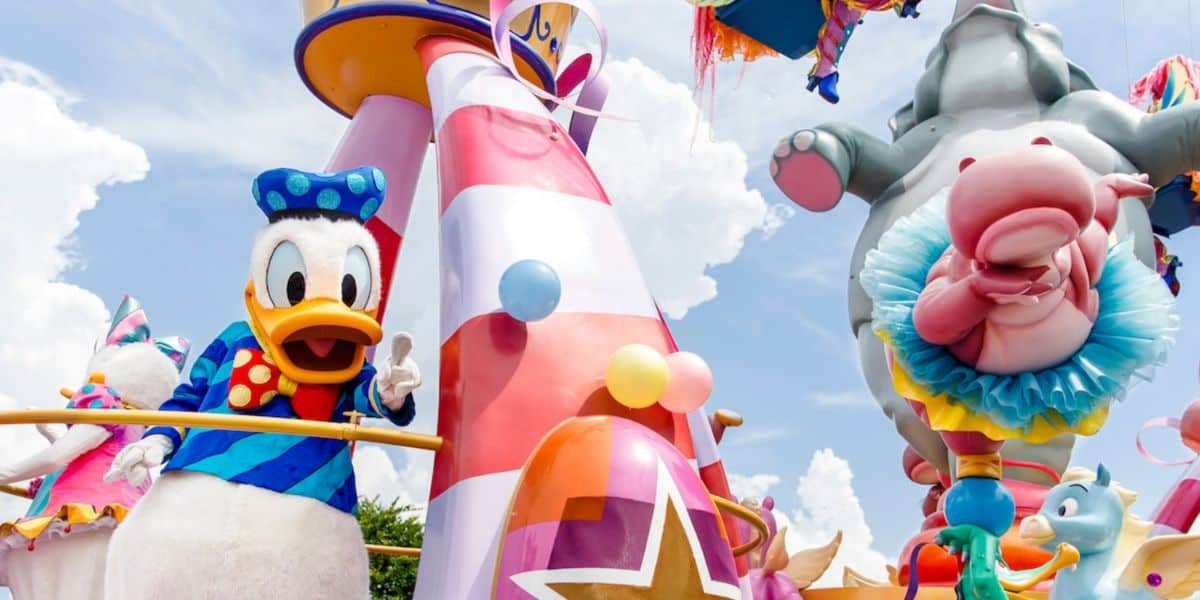
The Magic Is in the Details
When you look closely, Disney isn’t just building theme parks—it’s crafting immersive environments designed to feel limitless.
- Forced perspective makes icons tower.
- Layered sightlines stretch your view.
- Curved paths and landscaping create depth.
- Visual anchors give direction and scale.
- Sound and scent make the world feel bigger than what’s on the map.

This is why guests can spend an entire day at Magic Kingdom and still feel like there’s more to uncover. Disney’s architects and Imagineers are masters at making the ordinary feel extraordinary.
The next time you’re walking down Main Street, take a second to really look around. Notice how the castle seems taller, how the pathways curve just enough to make the journey feel like a quest, and how the music shifts as you enter each new land.
That’s not a coincidence. That’s Disney magic—cleverly designed to make you believe the world you’ve stepped into goes on forever.
